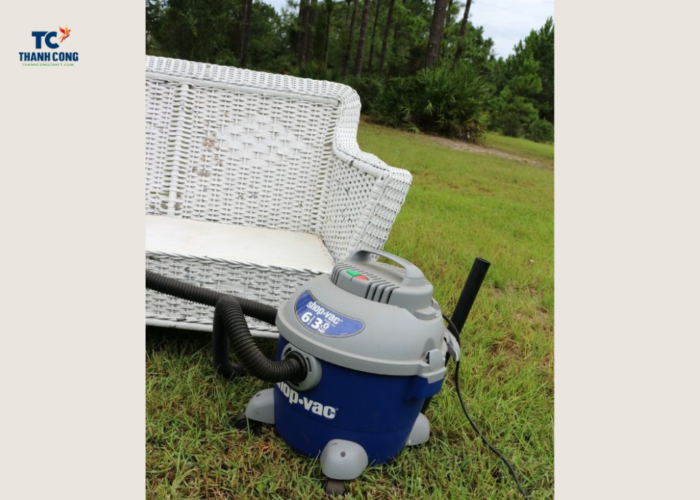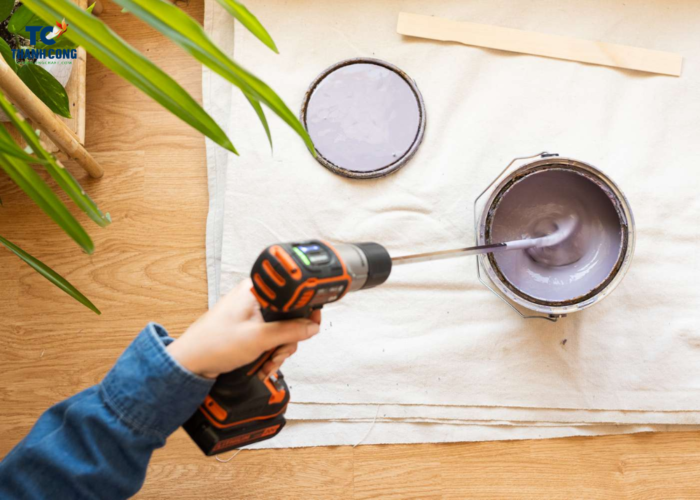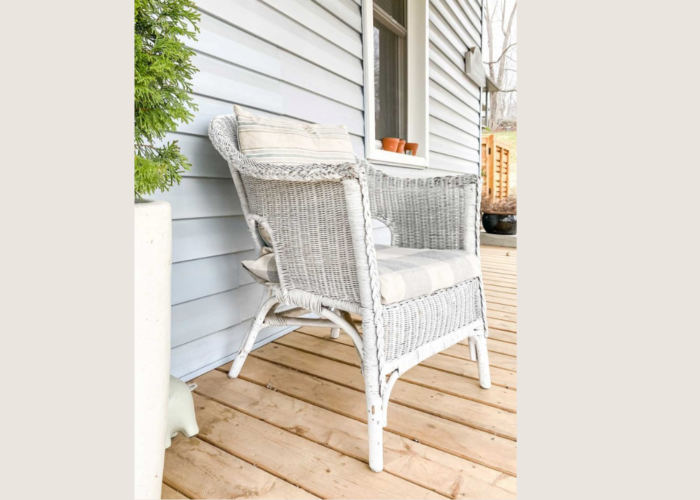Whitewashing is a painting technique that involves applying a light white color to interior furnishings made of natural materials such as wood, bamboo, or cane rattan. Whitewashing helps create a classic, elegant, and bright appearance for your living space. In this article, we will guide you on how to whitewash wicker furniture in a simple and effective manner.
Contents [hide]
1. How to whitewash wicker?
Whitewashing can give these furniture pieces a bright, fresh look that complements various decorating styles. To whitewash wicker, you’ll need to prepare the following tools and materials:
- Brush or a paintbrush;
- Spray bottle with water;
- Dry cloth;
- White latex paint or white acrylic paint;
- Bowl of warm water;
- Bit of dish soap.
Once you have all the necessary tools and materials, you can follow these steps to whitewash wicker:
Step 1: Clean the wicker
Start by cleaning the wicker furniture to remove any dust, dirt, mildew, or stains. You can use a brush, a vacuum cleaner, a lightly damp cloth, vinegar or baking soda to get rid of them.
For more detail, click here: https://thanhcongcraft.com/how-to-clean-a-wicker-chair/

Step 2: Thin the paint
You can use either white latex paint or white acrylic paint to whitewash wicker. However, don’t use undiluted paint; instead, mix it with warm water at a 1:1 ratio. Use a bowl of warm water and add a bit of dish soap to create a thin paint solution. Stir the mixture until it becomes a light and uniform white.

Step 3: Whitewash the wicker furniture
Use a paintbrush to whitewash the thinned paint solution and apply it to the wicker along the fibers. Work on small sections at a time and wipe away excess paint immediately with a dry cloth. Avoid letting the thin paint solution penetrate too deeply into the wicker, as it could make it damp and susceptible to mildew.
Also, refrain from applying too much paint, as it may compromise the natural look of the wicker.

Step 4: Let the wicker furniture dry
Once you’ve finished painting, allow the wicker to air-dry completely in a well-ventilated space, avoiding direct sunlight. You can leave it indoors or place it on a balcony, but avoid damp environments such as bathrooms or laundry rooms. Do not use a hairdryer or fan to expedite the drying process, as it may cause the wicker to shrink or deform.

After the wicker has dried completely, you can enjoy the results of the whitewashing process. Use the whitewashed wicker for decorating your home, as furniture, or as a thoughtful gift for friends and family.
You can also enhance its appeal by adding accessories like cushions, blankets, flowers, or lights to create a cozy and vibrant atmosphere.
2. FAQs
2.1 What kind of paint do you use to whitewash furniture?
You can use any type of paint, whether it contains lead or is lead-free, but it’s advisable to choose a paint with low or semi-gloss sheen for the best results. Additionally, you’ll need to dilute the paint with water at a ratio of 1:1 or 2:1, depending on the desired coverage.
Afterward, simply use a brush or cloth to apply the paint to the furniture surface, and wipe away any excess paint to achieve the desired faded effect.
2.2 Can I use chalk paint to whitewash?
You can use chalk paint to create a whitewash effect on wood surfaces, walls, or furniture. To do this, you need to dilute the chalk paint with water at a ratio of 1:1 or 1:2, depending on the desired coverage. Afterward, use a brush or cloth to apply the paint to the cleaned and dry surface. You can repeat this process multiple times to achieve the desired color and sheen.
Finally, it is advisable to use a clear sealant or wax to protect the chalk paint layer and enhance durability on the surface.
2.3 Does whitewash rub off?
Whitewash can rub off to some extent, especially if it hasn’t been properly sealed or if the surface undergoes heavy wear and tear. Without a protective finish, whitewash may be susceptible to rubbing off when touched, brushed against, or exposed to moisture.
To enhance durability and minimize rubbing off, it is recommended to apply a clear sealant or wax after whitewashing. This protective layer helps secure the whitewash and ensures it adheres well to the surface, reducing the likelihood of it rubbing off easily.
3. Final thought
Beyond the aesthetic upgrade, wicker furniture whitewashing also provide a protective layer, ensuring the longevity of your furniture. Now, as your whitewashed wicker furniture graces your living spaces, basking in its renewed radiance, you can revel in the satisfaction of a DIY project well done.
Enjoy the timeless appeal and personalized touch your whitewashed wicker brings to your home, a testament to both creativity and craftsmanship.
If you have any further questions, don’t hesitate to send thanhcongcraft an email us at info@thanhcongcraft.com or message us at WhatsApp: +84967485411. Hope to serve you soon! Best regard!


